Nelson Mandela and the Aegis
Zeus, the father of the Gods and the God of light, rain and thunder had the Aegis for protection (a kind of shield made of viper skin with fish scale design), which he donated to his beloved daughter Athena.
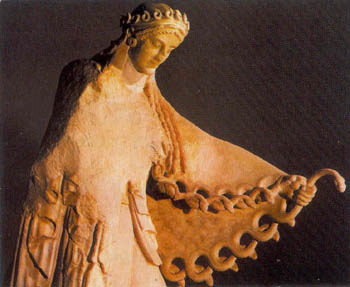
Detail of an archaic marble statue of Athena in the Acropolis Museum. The Aegis has painted fish scale design and is trimmed with viper heads.
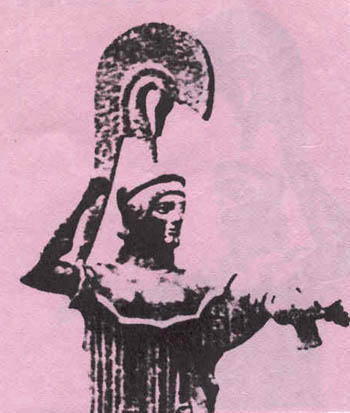
An early 5th c.BC bronze statue of Athena in the Archaeological Museum. The edge of the Aegis is pointed at equal intervals.
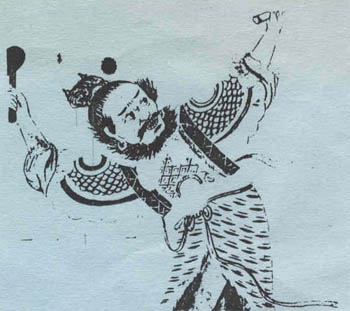
Different ways to wear the Aegis. The Chinese Master of Thunder in the Victoria and Albert Museum,
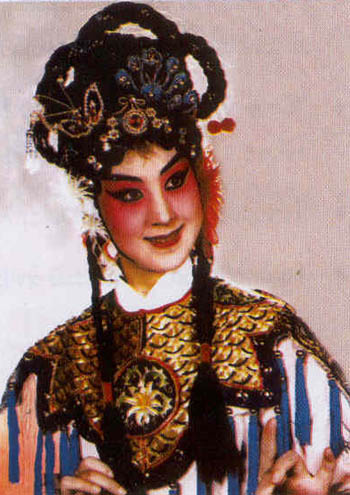
Empress-Goddess of the Peking Opera with "Aegis".Fish scale design and the edge is of different color and pointed at equal intervals.
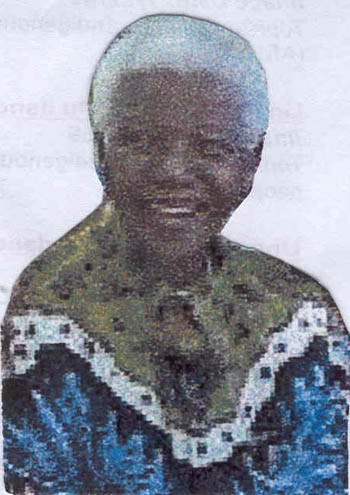
Nelson Mandela celebrating his 86th anniversary. When he goes to his home town (Qunu) he wears this kind of collar. It has symbolic snake decoration and the edge is of different color and pointed.
The white collar of schoolchildren around the neck (mainly female but also male).
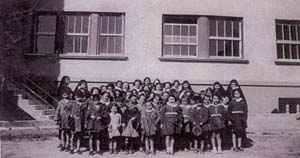
"Pammakaristos" grammar school for girls in Athens running by Catholic nuns (the author with white collar is the second from the right)
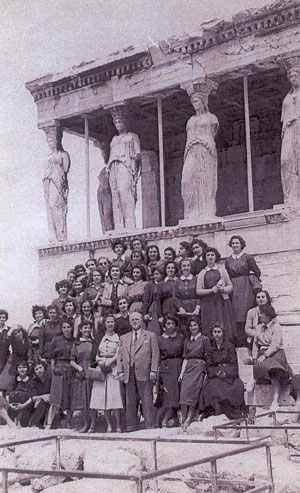
"Arsakeion" High School for girls. The same white collars. The author (third from the left) recited by heart on the Acropolis the "Funeral oration of Pericles".
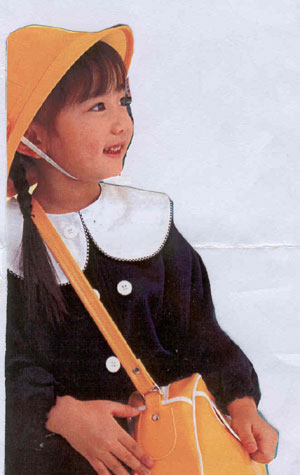
"Cambridge" Bilingual School, Taiwan. Photo SINORAMA, July 2002.
Coronation and decoration with bands-snakes and belt-snakes
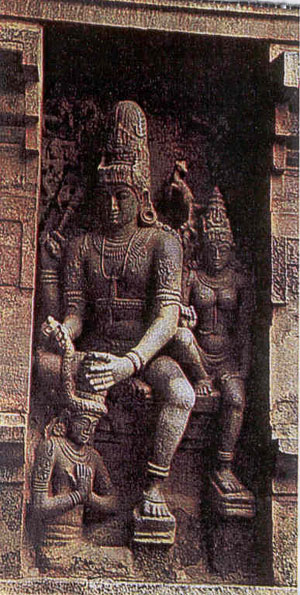
Shiva winds a snake around the head of the victorious King Kola. From Temple Gangaikondalapuram. India, llc. In situ.
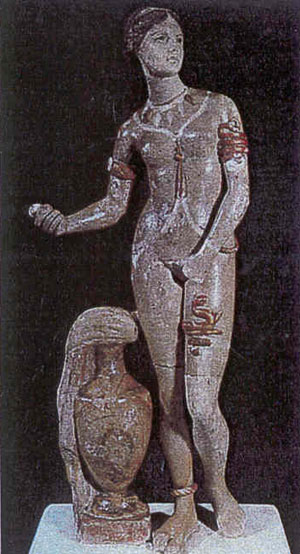
2nd c. BC clay Aphrodite in the Museum of Canakkale. Snakes around the arm and ankle and on the left thigh.

Archaic pediment with Gorgo with snakes around her waist. Corfu Archaeological Museum.
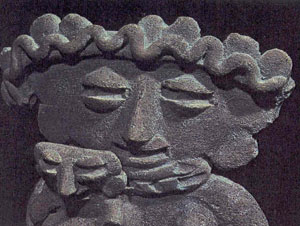
"Mother and child". Detail of a clay statuette (200 BC-200 AD). Mexico City Museum of Anthropology and History.
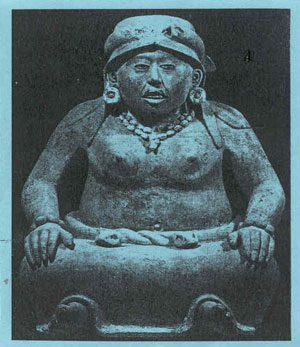
Clay figure from Vera Cruz.900 AD. A snake around her waist. Brussels Royal Museums
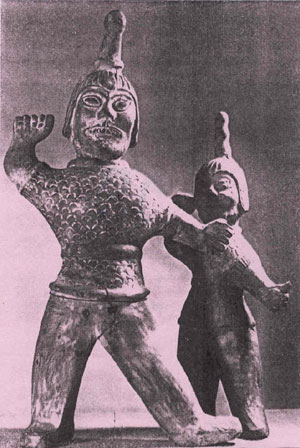
"Exorcists or Shamans". Shang dynasty (1,600-1027) bronze figures with the same double "belt" and wearing viper skin jackets (like on the Harvesters's vase of Aghia Triada, Crete). Prague Narodni Gallery. Their pose (hands and legs) is similar to that of the "Prince of the Lilies".
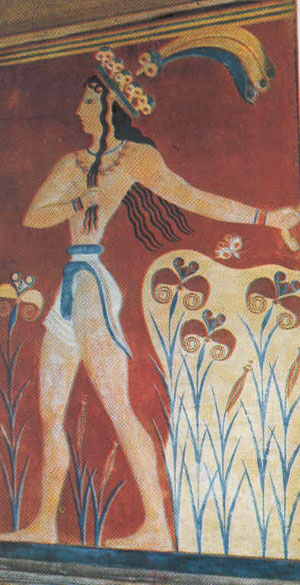
The "Prince of the Lilies" of Cnossos. In his right hand is left a small piece of a snake and he is wearing the same belt-snake
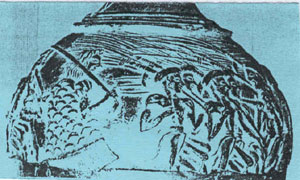
The harvesters 's vase in the Heracleion Museum Black steatite. About 1,500 BC. Detail. The same jacket with fish scale design (viper's skin).
"Snakes" around the neck, arms, waist, knees and ankles for Greeks and Zulu
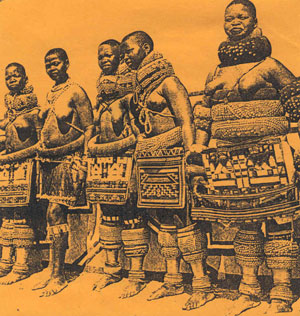
"Girls emerging into the marriageable status". The body hoops or bands, the solid brass bands of the legs and the apron of beads weigh 20 kilos! The Zulus, today, like the Greeks and the rest of the World do not know anymore that "the hoops" and their decoration imitate the snake! (Theresa.Mitsopoulou "The Dragon-snake in East and West", Athens 1994, p. 103). This kind of decoration of the body was, apparently, already known to the Zulu when they came to S.Africa from their original cradle with the apron probably pre-dating the skirt. Photo from the book of Aubrey Elliott "Tribal dress".
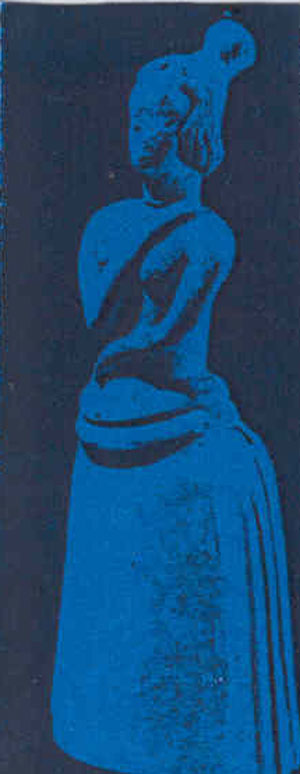
"The queen of Knossos" with long skirt and two more headless statuettes with open breast in the Museum of Heracleion.
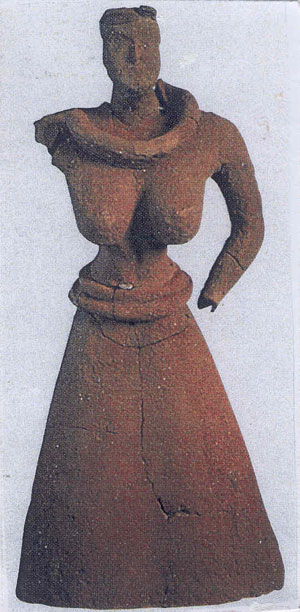
Clay statue from Aghia Irini in the Museum of Kea island, with open breast. Bronze Age (about 1,500 BC). H.1,05 m. The bands around the neck and the waist imitate the snake. In the "Temple" of Aghia Irini were found about 50 statues (from 0,60 to 1,60 m. and most of them in fragments) of "girls or Goddesses, a kind unknown from other places". They wear long skirts like those of the "bell-shaped idols". The "goddess of the snakes" of Crete wears a tiered skirt and apron with symbolic patterns.
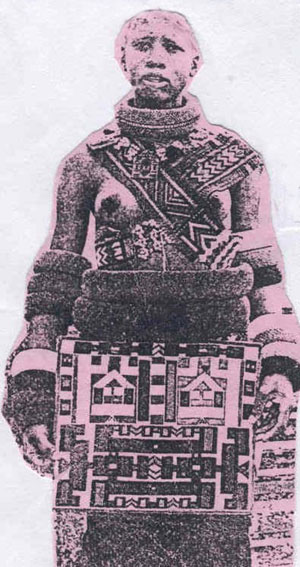
Another girl from the same book. The bands on the breast and the apron have symbolic patterns.
The band of victor on the forehead and around the arm
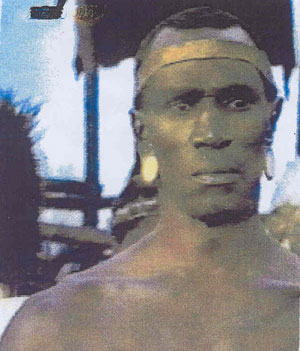
Shaka, the King of Zulus with the victor's band
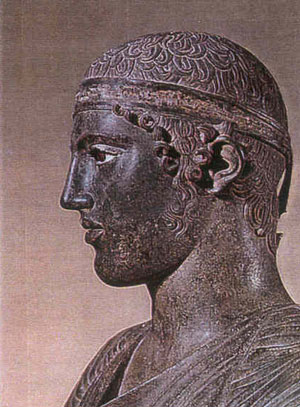
The Charioteer of Delphi (470 BC). On the victor's band meander design, one of the symbolic representations of the snake.
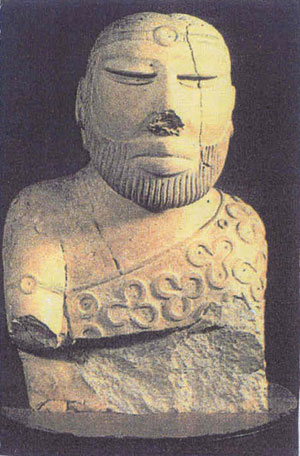
Steatite head of the King-priest from Mohenjo-daro.3rdmill.BC. The most important finding of the Hindus valley and Pakistan's National treasure. Band on the forehead and also around the arm.
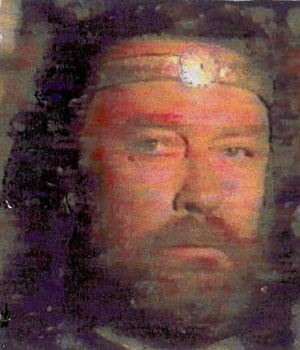
Saoul, first King of Israel (1,100-1,040 BC). From the Paramount Picture with Richard Gere. The band on his forehead has in the center a round coin like that of the "King-Priest".
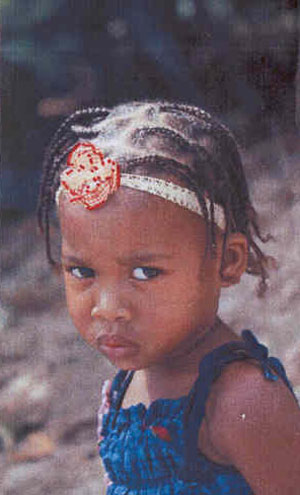
Little girl of the island Sao Tome near the NW coast of Africa.
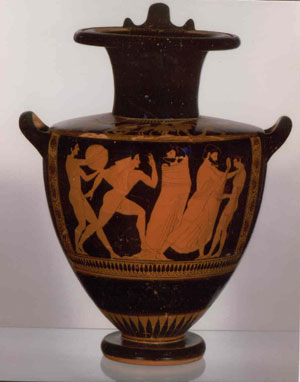
Red-figured hydria in Munich (Nr. 2024). Photo courtesy of the Museum.
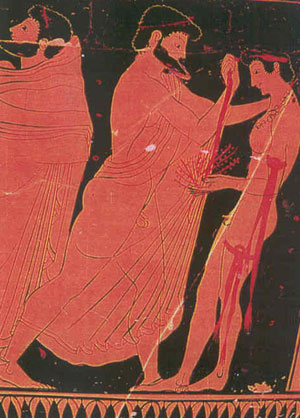
Coronation of a victor in Olympia with a red band. He has already bands around the arm and thigh. From Vulcj, Italy (found in an Etruscan tomb). Detail of a red-figured hydria in Munich.
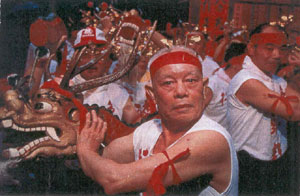
In Macao during the 2002 celebrations for the Union with China dancers-heros of the Dragon dance had red bands on the forehead and around the arm.
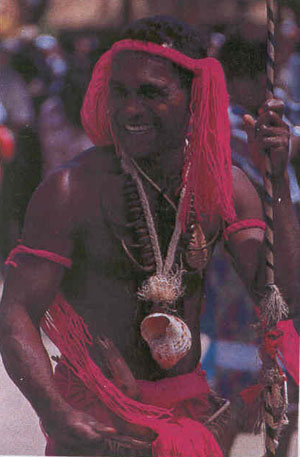
Art Festival of the Pacific (New Caledonia). A dancer.
Double horns on Crete(Cnossos), Cyprus and China....
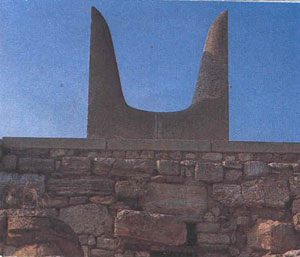
"Aegean religion". Cnossos, Crete.Consecration horns.
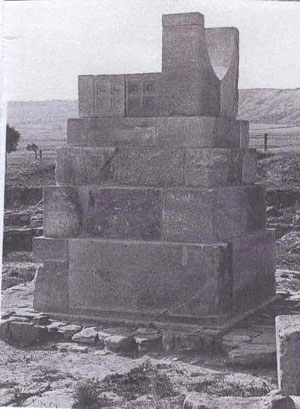
Myrtou Pigades, Chyprus. Reconstructed altar with « horns of consecration ».
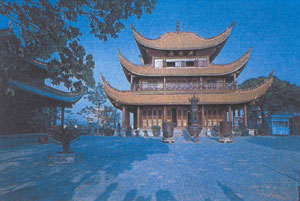
Yueyang Tower, Hunan, "A three-tiered building with multiple eaves" . Originally built in the Three Kingdoms period (220-280 AD).The eaves end in oriental peaks, which curve upwards and outwards and symbolize bull's horns.
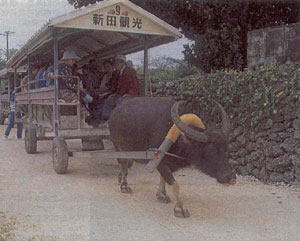
Taiwan, Taketomi island. Tourist transportation. SINORAMA, April 1992.
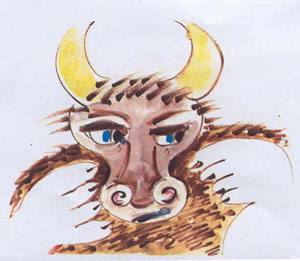
Buffalo head. The horns curve inward.
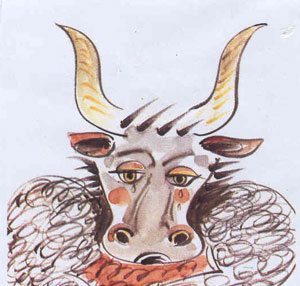
A bull's head. The horns curve outward.
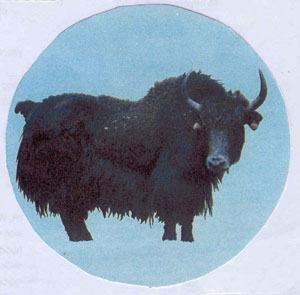
Tibetan yak.

Water buffalos work in the rice fields. In Greece it is a species under protection and a few hundreds live near the lake Kerkini at the foot of Mt.Beles.
Buffalo horns on helmets and masks.....

!3th century BC bronze statue of a God ("Apollo?"). H.52.2 cm From Enkome, Cyprus. Nicosia Archaeological Museum.
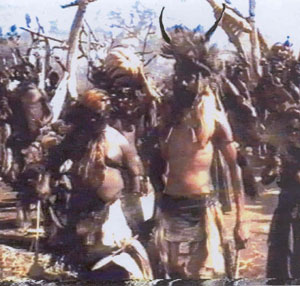
Zulu with buffalo horns.
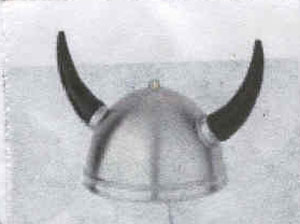
It is believed that the Vikings also had horned helmets.
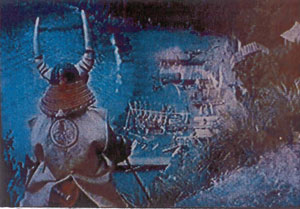
The Samurai used to wear bull horns on their head from a mediaeval Japanese film.
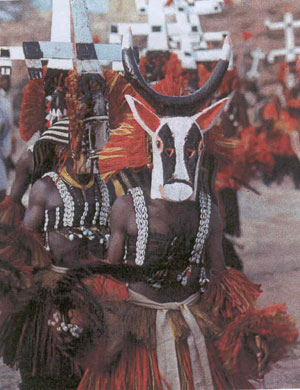
Mali, W.Africa. Mask with buffalo horns.
Head - Dresses Imitating Buffalo Horns....
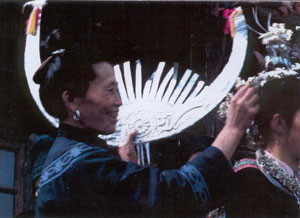
A Miao bride getting ready for the wedding.
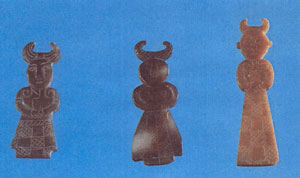
Three jade female figures "coiffees en cornes de boeuf". H.3.1, 3.4 and 4 cm. 4thc.BC. It is rather buffalo horns, because they curve inward. Photo from the Catalogue of the Archaeological Exhibition about the Kingdom of Zhongshan (South of Beijing) at the Grand Palais, Paris, November 1984.
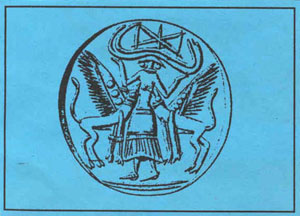
Minoan seal made of Sardonyx. About 1.500 BC. Herakleion Museum. Buffalo horns and double axe.
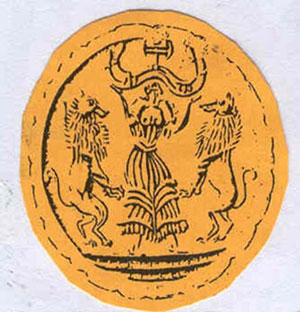
Mycenean seal from a chamber tomb (Agnes SakellariouNr.44).
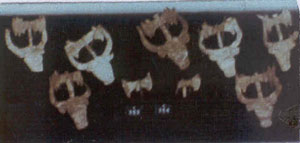
Miniature gold buffalo heads with double axes from the Royal grave circle A of Mycenae. Athens Archaeological Museum.
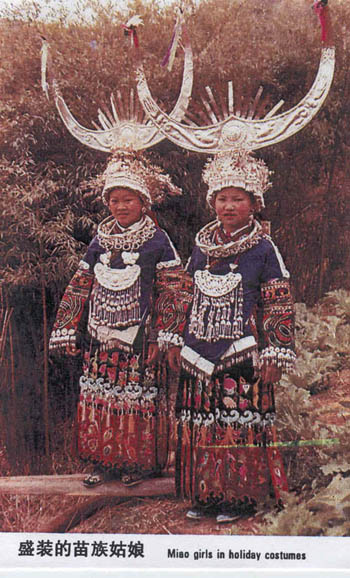
Miao minority girls (Guizhou) wearing silver head-dresses in buffalo horns style. "The Miao people believe the buffalo has the power to ward off Evil spirits".
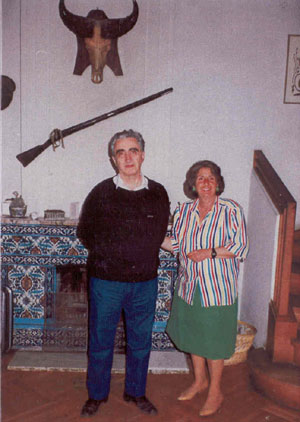
The late Ambassador Stathis Mitsopoulos with his sister Theresa in his home in Psychikon in 1990. A passionate hunter with one of his trophies from when he was posted in Africa on the wall and one of his beloved rifles ("hand made and decorated with silver").
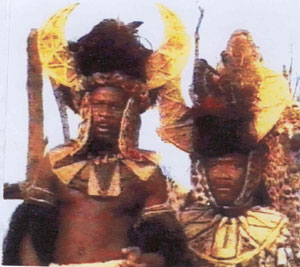
Zulu officials with head-dresses resembling "a half moon".
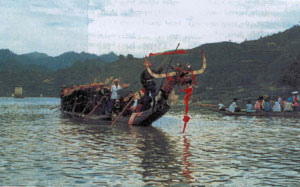
A dragon canoe of the Miao with a buffalo-dragon head.
Ram's horns or rather snakes? The Ionic style capital....
In the small Archaeological Museum of the island of Siphnos (at Kastro) there is a unique exhibit. An Ionic votive marble capital where inside its spirals heads and mouths of snakes are discernible.
The snake-spiral to the left coils from left to right and the snake-spiral to the right from right to left. It is just one and, apparently, was but a votive capital (inside the Temple of Apollo Epikourios, twin brother of the Parthenon, at Phigs Jeia, was one most probably votive Corinthian capital).
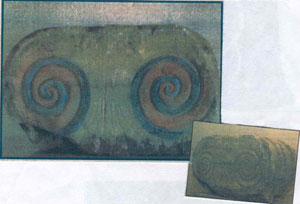
To the right: the votive capital in the Museum of Siphnos and to the left: the capital with imaginative colours. It is generally believed that the spirals of the Ionic style capital symbolize ram's horns.
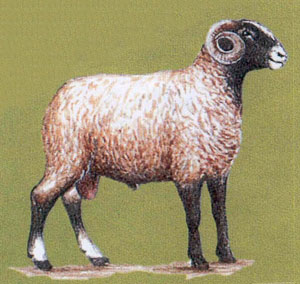
A ram with horns.
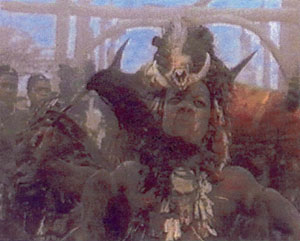
The dwarfs- magicians, physicians, dancers and prophets of Shaka. They wear on their head different kind of animal horns. The original man was impressed by the fact that from two animals with horns when fighting one had to die. He will decorate his head with animal horns to show that he had succeeded in killing them.
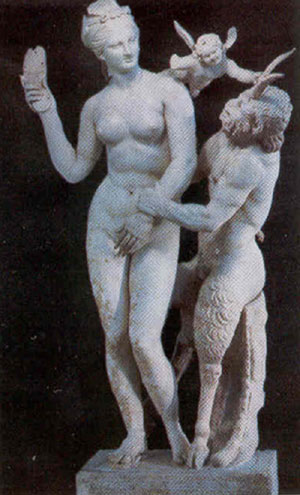
Pan with he-goat horns like on one of the magicians of Shaka.
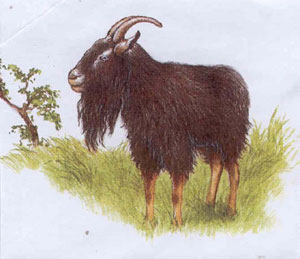
A he-goat.
Beef (young bull) horns on hair-dresses and helmets.....
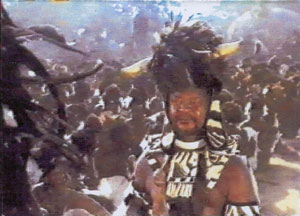
The Prime Minister of Shaka with beef horns on his head.
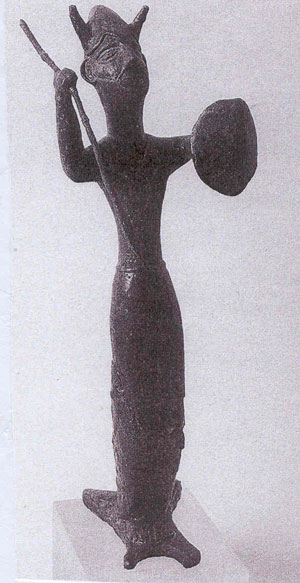
"Unknown armed God" from Enkome, Cyprus. About 1.300 BC. Nicosia Archaeological Museum.
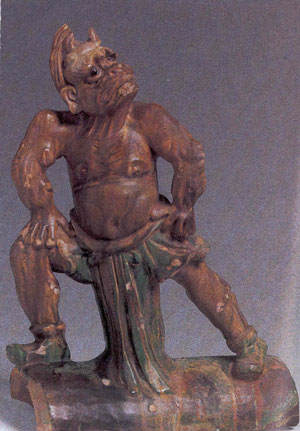
"Male figure with horned head". Horned ceramic gargoyle of the Ming Dynasty. Situated on the roof to guard off evil spirits and demons. Corfu Museum of Asian Art (Gr.Manos Collection).
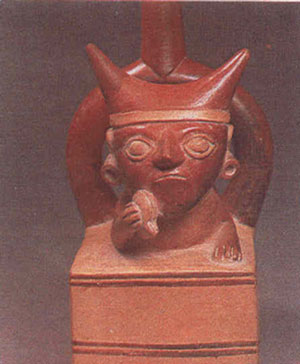
Chimu culture of Peru. Lima Archaeological Museum.